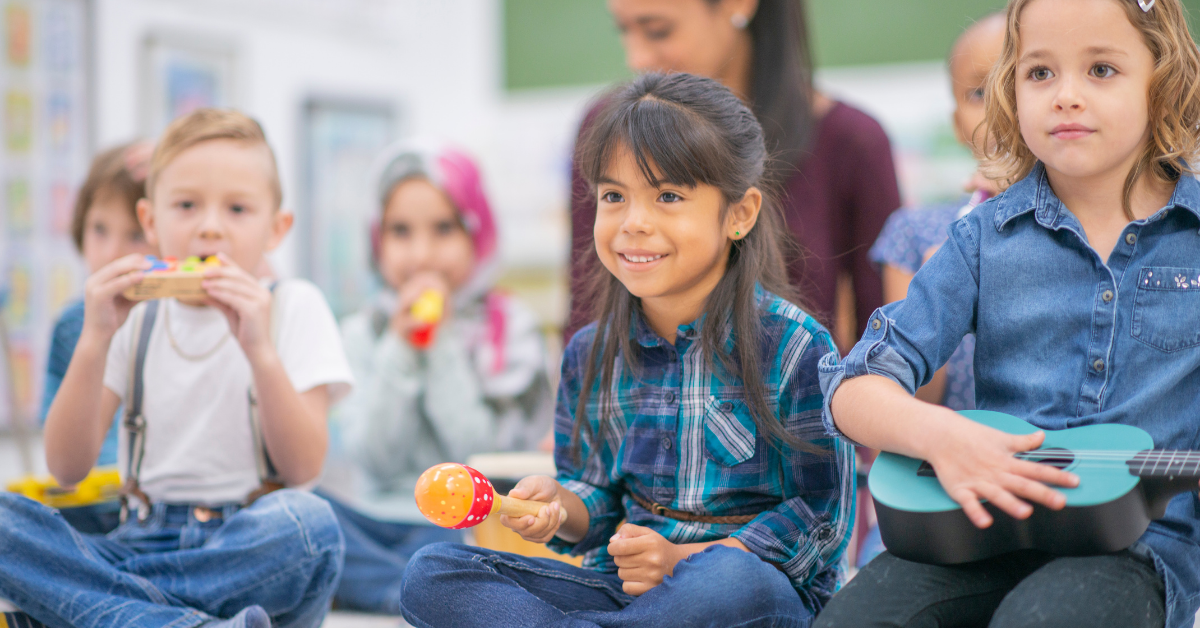
“Evidence is growing that disparities in social and emotional
skills are just as important as academic disparities.”
The Future of Children (Princeton-Brookings) Volume 27 Number 1 Spring 2017
Magic is most commonly mentioned in the context of they’re not being any--as in, "hard work is the only magic, and it's not magic, it's just hard." We're told over and over as educators that there are no magic wands, just high leverage strategies and best practices. But if there is magic, music might be it.
"Music is an effective, almost magical medium for learning and retaining information," says Don McMannis, an expert on children's music. "It activates three different centers of the brain at the same time: language, hearing, and rhythmic motor control. By inducing emotions, it also creates a heightened condition to awareness and mental acuity. Words paired with music are far easier to retain. As an example, most of us can remember the words and meanings of songs we haven't heard for years."
Music has the power to enhance learning in almost every context and content area, but particularly social emotional learning (SEL). The Collaborative for Academic, Social and Emotional Learning (CASEL) defines SEL, “Social and emotional learning is the process through which children and adults acquire and effectively apply the knowledge, attitudes, and skills necessary to understand and manage emotions, set and achieve positive goals, feel and show empathy for others, establish and maintain positive relationships, and make responsible decisions.” How does music impact these skills?
Researchers from the Montreal Neurological Institute and Hospital, Valorie Salimpoor and Dr. Robert Zatorre, explain some of the science behind the magic. Music triggers an intense pleasure response that can lead to dopamine release in the striatal system. “These findings provide neurochemical evidence that intense emotional responses to music involve ancient reward circuitry in the brain,” says Zatorre.
In other words, music cheers us up, and right now, much of our social emotional instruction is focused on just giving our students strategies to feel better: less afraid, less bored, and less anxious. Music, and particularly singing as a group, has been shown to boost not only mood, but also self-esteem and a sense of purpose, while alleviating feelings of stress and depression.
Latricia Wooten, a first-grade Language Arts teacher in Miami’s Brentwood Elementary, uses the SEL curriculum from QuaverEd out of Nashville (so you know the music is top quality!), to help her students identify, communicate, and process their emotions.
“My students face challenges every day. But every, single time I play a QuaverSEL song – every time, I want to say that again — their faces light up. Their day gets better. I am not a music teacher, but I use this beautiful music to motivate and comfort my students.”
In an independently study conducted by SEG Measurement, students taught through the QuaverSEL program achieved "significantly greater growth," and a "broad, positive, across-the-board" impact was observed in students across gender, race and socioeconomic backgrounds.
Given the cited benefits, our students need music-enhanced SEL instruction and support now more than ever. Don't back burner music and SEL during hybrid and distance learning.
Health:
Increased immunity anyone? Researcher and journalist Daniel Pink in his 2018 book, When: The Scientific Secrets of Perfect Timing, reported the numerous benefits of singing and making music together. "To me, the most astounding finding was a study that did the following. They measured people’s immunoglobulin levels — which indicates someone’s immune response. Then people sang in a choir. Then they measured again — and people’s immunoglobulin levels increased!"
Resources:
There are abundant and readily available resources for both music and SEL. QuaverEd's Pre-K to 5 digital curriculum can be easily adapted to remote and hybrid learning and incorporated into any content area. In addition, they offer an SEL song of the month on YouTube and this month's song is in Spanish. (Unico)
Relationship:
Pink also reported that when kids do synchronous activities they become increasingly "pro-social." They are more likely to cooperate, more likely to play with kids that they don't know well and who are not like them, and they are more likely to help others. Singing increases our sensitivity to others. Students can sing and make music together over Zoom or through virtual choir opportunities. The awkwardness fades quickly and the benefits abound.
Diversity:
Music can be a fun way for students to explore other cultures and customs. By learning about different musical traditions, students learn to accept differences in others and celebrate diversity. With the world at our digital fingertips, this is the perfect opportunity to explore the musical heritages of class members, helping students feel seen and valued. The Smithsonian Folk Way Recordings website includes lesson plans for a range of age groups.
Performance:
Performing can be scary, but it is a little less threatening when the audience is virtual. Performing in front of others is a good opportunity for students to practice a range of social and emotional skills. Besides learning to control anxiety, students also learn how to set goals, gain discipline through practice, and cope when a performance doesn’t go perfectly.
“These are kind of dark times," says school counselor Tyrone Thompkins, who also uses QuaverSEL. "I’m going to do everything I can to make sure I give my students everything they need to make it through."
If you are currently using an SEL curriculum that does not capitalize on the magic of music, then you are working way too hard for a greatly reduced impact. If you had a magic wand, wouldn't you use it?


